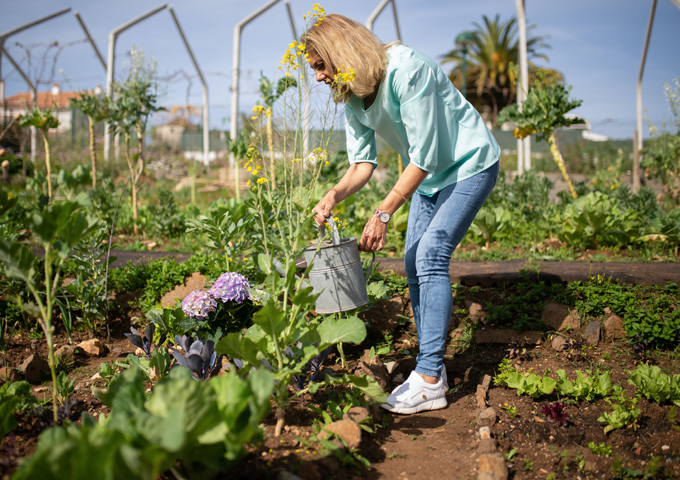
Giving your garden a good frame
There is a lot of work that still needs to be done even though winter tends to be a quiet season. During the December to March period which is mostly cold, you have the chance of building cloches, cold frames, or even greenhouses. This is good because you have a chance of extending the harvest season.
The winter season is also a great time for starting early spring crops from seed. Your garden’s framework is going to be revealed during the winter, which is why it is the best time to lay paths, dig new beds, and gather sticks for staking peas and beans.
Starting your seeds
There are some benefits to starting seeds indoors – it is cheaper to start from seed compared to buying seedlings, you have the chance of harvesting earlier, and if the soil used is uncontaminated, then the seedlings can easily become healthier and stronger compared to those that were raised in factories. If you save the seeds with time, it is possible to come up with unique varieties that will take your garden to the next level.
Begin by filling a container. You need to have a growing medium that is uncontaminated. Get a container that drains well. If it isn’t draining well, then punch holes. Follow the package directions when you plant the seeds, then put the container inside a large, transparent plastic bag. This bag is important because it raises humidity and the temperature of the growing atmosphere. If the seeds need sunlight, then make sure you place them in a sunny spot and turn the container regularly for the stems to grow straight. Keep in mind that not all seeds require sunlight to germinate. Check the soil regularly to make sure it is moist, but be careful so it doesn’t get sopping wet. When the fertilizer has four or more leaves, add fertilizer. Cool-season crops like cabbage, broccoli, leeks, celery, and some types of lettuce can be started indoors in the winter months.
Harden the seedlings off in a cold frame or with clothing before you plant them, so the tender seedlings have a better chance of surviving. Residential lawn care services are available on a weekly, fortnightly, or monthly basis. They are experts in maintaining lawns. You can use them too.
Creating a cloche
A good way of bringing harvest forward a couple of weeks is sheltering the plants from frost and wind using an inexpensive cloche. This is a cover to protect plants from cold temperatures. You can build it any time, but provided you have it ready when you need to move seeds outdoors around February and March. One good thing about making a cloche is you can make it using about anything. It can be small, large, tall, short, mobile, or fixed. Below are some ways of building.
Take a 5-gallon water container and convert it into a cloche. Cut out the bottom and then place it over the seedlings like a large bell.
Fill a small barrel or large bucket with soil and place a stake in the middle. Put the plant pots inside and cover them with a plastic sheet. Use bricks to weigh down the edges to make them secure. You can also install a locking ring around the top of the barrel or bucket.
Bending lengths of half-inch PVC pipes into hoops (this is like a croquet wicket). Cut the pipe’s edges at an angle (the end becomes sharp) and push them to the ground. You can make as many as needed and then the next step is covering them using painter’s plastic; this creates an open-ended tunnel over the garden bed. Use an anchor or gallon jug to weigh down the plastic.
A cold frame is an option when it comes to gardening.






